Europe & Turkey—Day 17: Hierapolis
Posted by DrKoineApr 16
April 16, 2010 (Friday)
Hierapolis. Got breakfast at about 8 am and then checked out of our hotel and headed to Hierapolis. The ancient site of Hierapolis is actually right up the hill from the resort town of Pamukkale.
The roads and entrance to the site are changed since we last were here in 2002. The entrance, large parking lot, and ticket booth complex are now a long way from the actual site remains and museum. You have to walk a long way uphill to get to the upper city and theater (probably 15–20 minutes).
The uphill trek is through the western necropolis area. A necropolis is a city’s ancient burial grounds. Those of Hierapolis are alongside the hill leading up to the city. Last time we were here we were able to drive through this area on up to the city. Now, we have to walk. The necropolis is a fascinating and huge burial area that covers acres of ground with monumental tombs, crypts, monuments, and sarcophagi everywhere. Along the way, Jerry takes a few pictures, but he plans to explore more on the way back down after we finish the Hierapolis site and museum. The long walk is hot and tiring, but spring wild flowers are in abundance, so the view is full of color.
We finally get up the hill to the ancient city. The gates to the city’s main avenue, called Frontius Street, are dated to the time of Domitian, similar to Laodicea’s Syrian Gate leading to Syria Street. Jerry says this gate construction indicates how active was the imperial presence in Asia Minor, especially the Flavian dynasty, at the time the book of Revelation was written. Grand arches into the basilica bathhouse complex also date to the time of Domitian.
Hierapolis Theater. Unfortunately, even when we get to the upper city and the theater itself, we discover you no longer can enter the theater at the bottom; the only entrance is at the tiptop on the backside up the hill! Another hill to climb. Ugh. Jerry goes ahead not to miss the right angle of the rising morning sun for his theater shots, and I follow behind, hiking up slowly. Once up there, I find Jerry and take pictures, and we do another “talking head” movie for Jerry’s classroom. This theater shows the back wall structure, called the skene, in pretty good condition, which is rare. (That’s why the theater at Aspendos on the southern coast is spectacular.) You can see how beautifully the skene was adorned with inscriptions, carving, reliefs, and statuary. Jerry was right. The theater is really perfect in the early morning light.
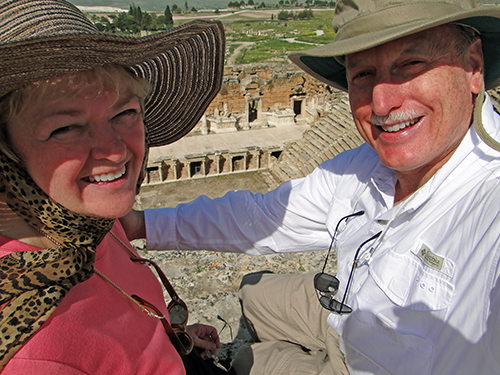
Hierapolis Museum. After getting the morning theater shots Jerry had wanted ever since our last visit to Hierapolis, we then head to the museum that we did not know was here in our first visit; unfortunately, this destination is another long walk from the top of the theater. The museum is larger than we thought. They have used three of the vaulted, basilica-style rooms that are part of the Roman bathhouse complex to develop three “salons,” or exhibit spaces.
Inside the museum, Jerry appreciated an artist’s depiction of the ancient city, which showed well how the city perched on the edge of the mineral cliffs with its theater right in the middle of the city. They had the typical displays from various time periods of pottery, bowls, lamps, and instruments. The coin display had quite a number of examples. Jerry, however, was disappointed. None of the coins were dated or labeled in any way. Without such information, he said, a coin display is practically worthless.
One Roman sarcophagus was of interest, because the chamber was found in nearby Laodicea from late 2nd century or early 3rd century A.D. The sarcophagus was for a husband and wife. Reliefs on the side depicted the life of the individual, education, and heroic scenes representing social status and honor.
Another Roman sarcophagus was a nice find, Jerry said, since the crypt dated all the way back to the time of Claudius (A.D. 41–54) in the first century, a rare find in this state of preservation, and is from Hierapolis. (Claudius was the emperor during the time of the Apostle Paul’s first and second missionary journeys.) The images of the reliefs on the partially-preserved sides of the sarcophagus are related to the bravery of an administrator of Hierapolis extolling him as if he were a god.
The remains of a colossal statue of Hadrian got Jerry’s attention. Hadrian was the Roman emperor (117–138) who put down the last Jewish revolt under the messianic pretender Simon Bar Kockba. Jerry documented Roman gladiator combat scenes depicted on reliefs on grave stele. We finish the museum in a heated rush, barely finishing as they started closing up for lunch.
Leaving the museum, Jerry likes the blooming violet trees in the courtyard area and grabs a quick picture of me underneath one. We then get our routine shot in front of the museum entrance.
Mineral Springs. The museum is near the famous thermal pools of Hierapolis at the top edge of the cliff over which the waters pour to create the white cliffs that can be seen easily from Laodicea down in the Lycus valley. We have viewed them before, but we walk over to visit them again and look out over the valley to see Laodicea in the distance. The pools are still impressive.
We make the long walk down the hillside back to the parking area. At least this time, the walk is downhill. Jerry takes more pictures of the necropolis remains. He seems especially interested in gladiator indications in the burial artifacts. Finally back at the ticket area at the bottom of the hill, we get a sandwich and an ice cream to cool us down a bit. After our late lunch at the rest area and café next to the parking area, we get back to the car to find our new hotel for the night.
Hotel Tripolis. Our new accommodations are at Hotel Tripolis, where we’ll stay the next two nights. The hotel is new construction with pretty grounds. The room is large with sort of a Hampton Inn look. We send laundry out for washing. Jerry decides he has just enough time before the Laodicea site closes for the day to search for the water pipes one more time. I stay behind at the hotel to rest and catch up on the journal. So, here we are. Tomorrow is our first rest/shopping day after 17 days of furious travel, work, and research! Looking forward to that!
Laodicea Return. Jerry returned from Laodicea—successful! He found the pipes! The story is really funny. Jerry had searched and searched again, and still saw nothing like what he had seen in the picture that was his mental landmark. The pipes were coming up straight out of the ground in the picture. He had scoured the ground inch by inch in exactly the spot he knew Richard’s emailed Google map had indicated. His heart was sinking. He could not believe he could not find the pipes and thought he would fail again. He was exasperated, indeed, desperate. He knew the archeological site was going to be closing for the day soon.
“And now, the rest of the story . . .” He told me that I would not believe what happened to cause him to find the pipes. He said that, in a really comical way, he found the pipes just like the Spaniard Inigo Montoya in the movie, “Princess Bride,” found the spot that would lead to the “man in black” with his sword pointed up to tell direction like a divining rod.
In like fashion, in his desperation, Jerry said he literally lifted his hands up to God, really frustrated, saying, “please help me find . . . ,” and in the moment he was saying the words and turning his head upwards to heaven, there the pipes were right above him staring happily back down at him! They were not coming from below out of the ground as he thought from the picture he had seen, but instead from above, coming down out of a water tower! What looked like pipes coming up out of the ground in the picture he had seen was really an inverted orientation of the camera looking straight up into the sky, but with no sky visible in the close focus of the picture to give an indication that the camera was pointed directly up into the sky! That’s why he missed them yesterday. He was looking down all the time, not up! So funny. A happy ending to a desperate search.
He took many pictures, so his trip back for one more try late this afternoon was worth it. The terracotta pipes beautifully show the lime deposit buildup of the strong mineral water that closed off the flow of water eventually, forcing the constant replacement of the pipes over time. This mineral water of Laodicea features in a statement of Jesus in Rev. 3:16.

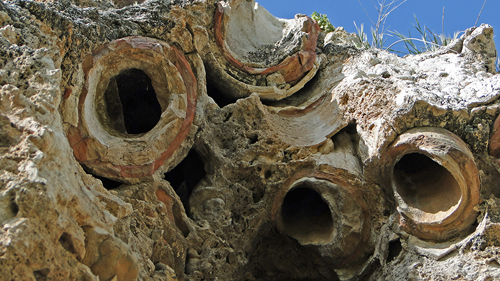
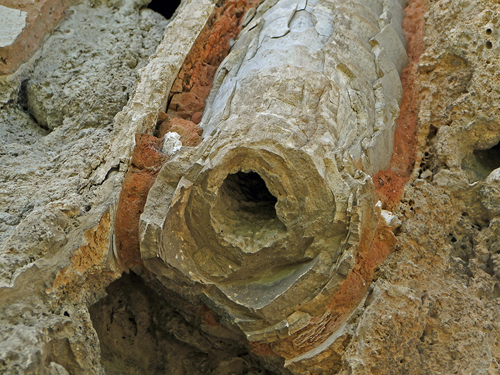
More Humor. Oh, and there’s more. Our laundry returns to our room, washed, but not ironed and folded—kind of damp dry, and Jerry now has a pair of pale yellow pants that used to be beige. I had no idea what they did to a beige pair of pants to turn them pale yellow; but, they were cheap and are still wearable. He’ll have an interesting “change of wardrobe.” J
Supper Search. For a change of cuisine for supper, we thought to drive into the modern town of Pamukkale, which is right next to the ancient site of Hierapolis and not far from the hotel, to investigate whether we had a local option for a restaurant besides the hotel. Since most of what we saw on the main strip was just “tourist” style with trinket shops and quick-stop stores, we end up back at the hotel. We have the hotel buffet with the many German tour groups that arrived late this afternoon, turning the place into a beehive.
Car Trouble? As we parked our rental car when we got back to the hotel in our search for supper, Jerry discovers we now have yet another car problem, a red blinking light on the dash—dang! We take the Turkish car manual into our room and try to figure out what the blinking icon on the dash means by trying to connect the icon shape with any descriptions about that image in the manual. We decide we think the blinking light means the car is due for scheduled service (oil change, etc.) and is just a reminder. We hope that the light will just blink for a set period of time to remind the car owner that the car needs regularly scheduled maintenance, and then voluntarily turn off. To bed—fairly decent sleep.
For a video of the Hierapolis and Laodicea action today:
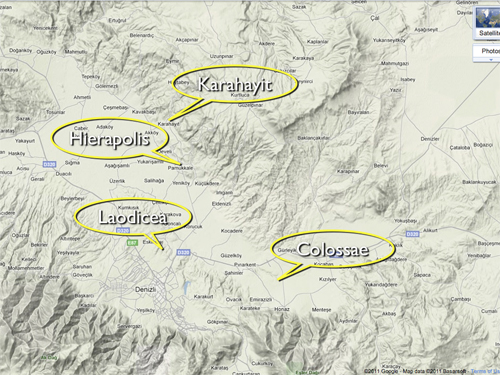
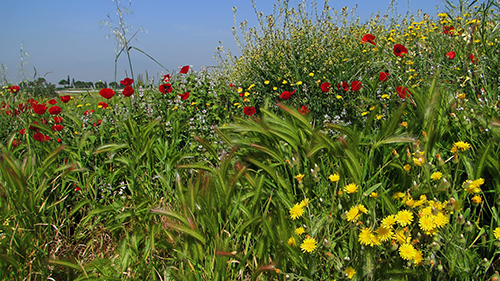

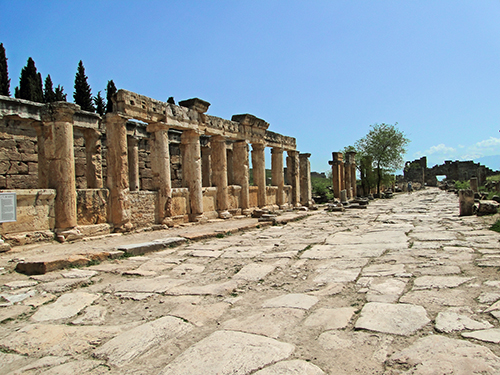
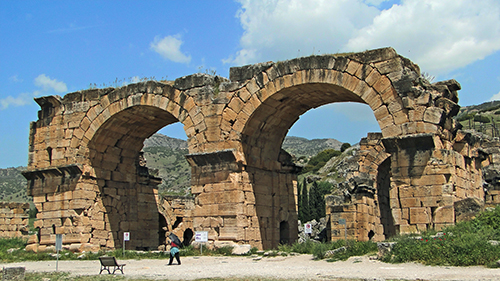
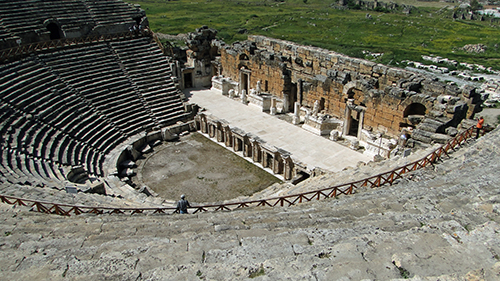
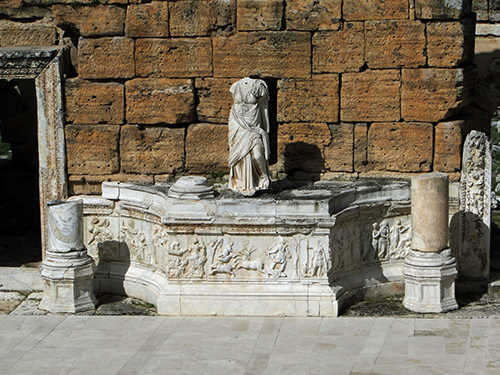
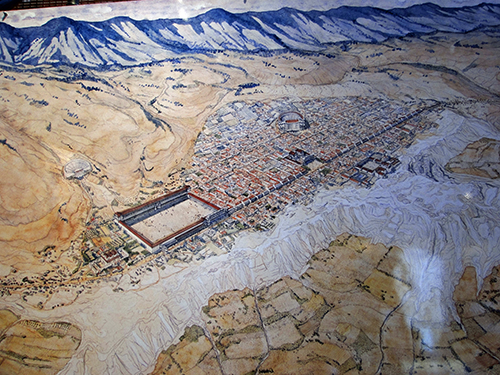
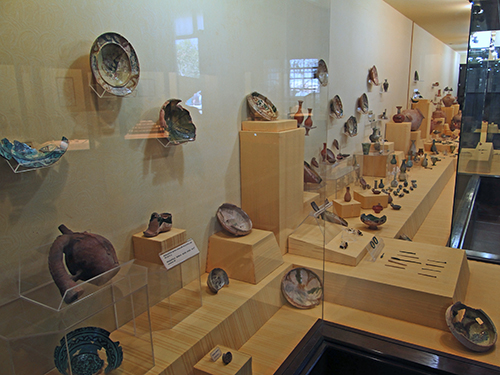
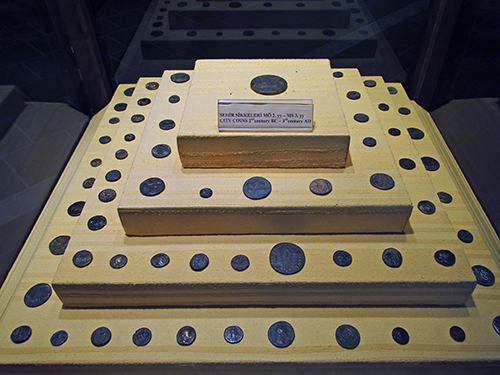
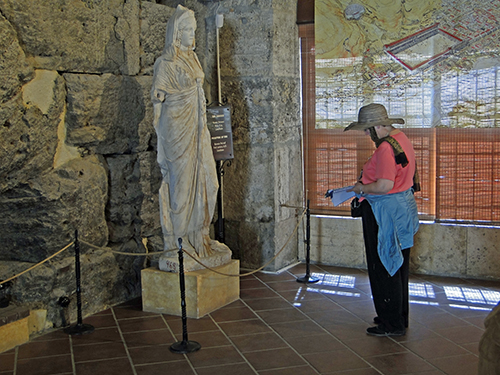
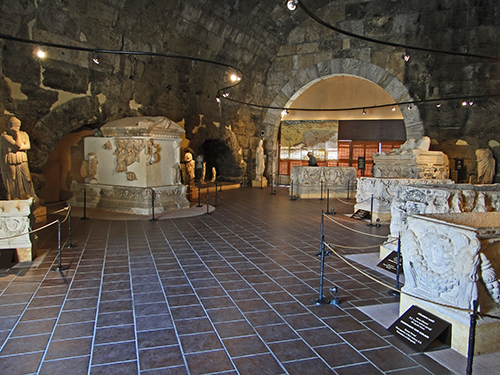
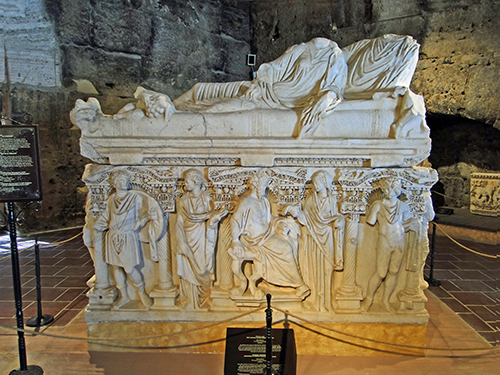
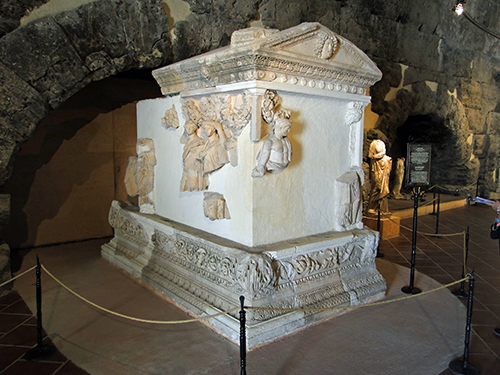
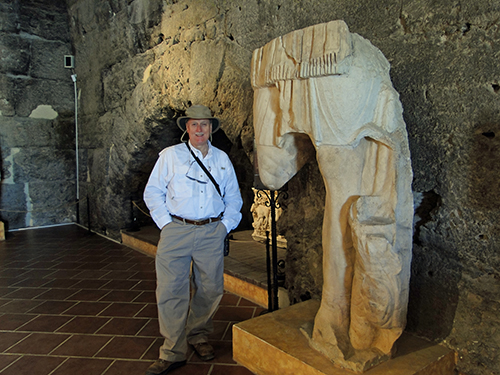
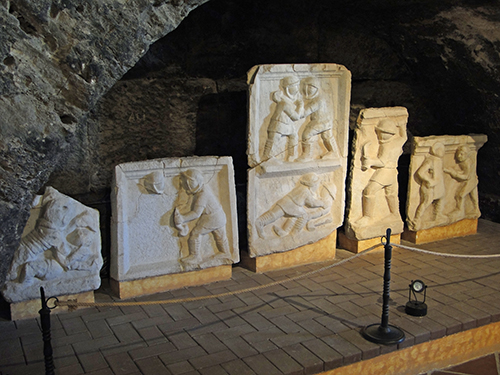
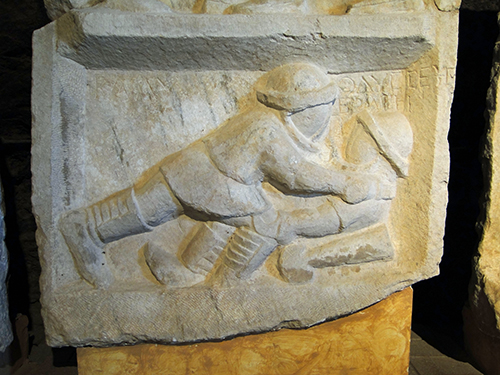
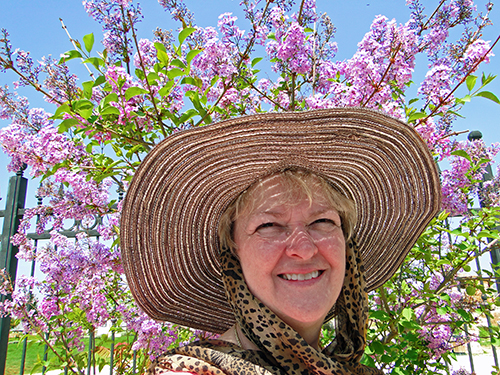


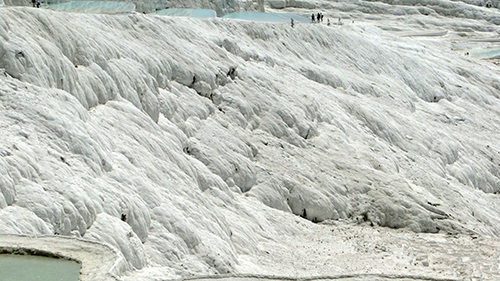
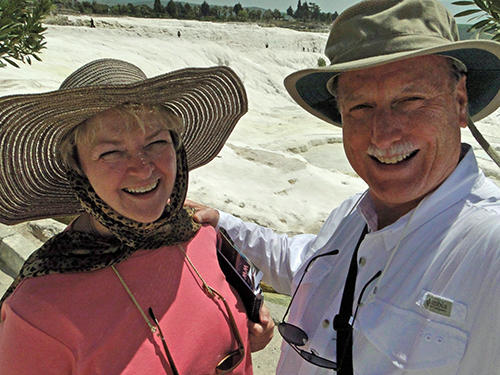
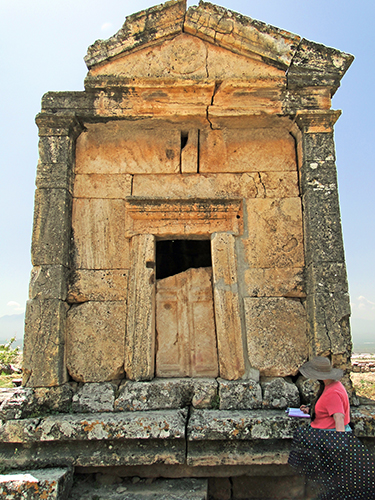

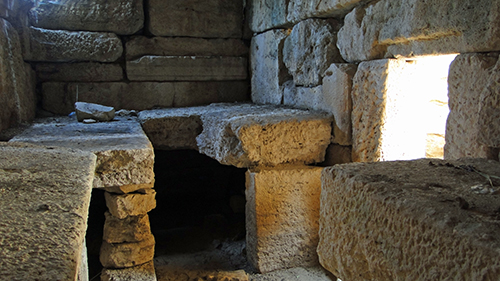
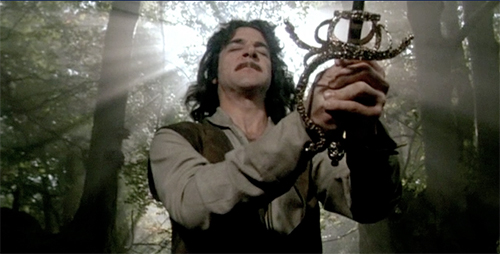
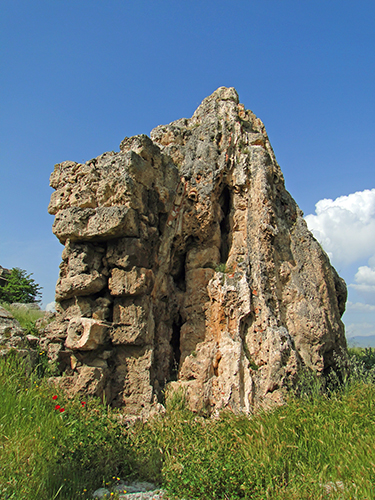
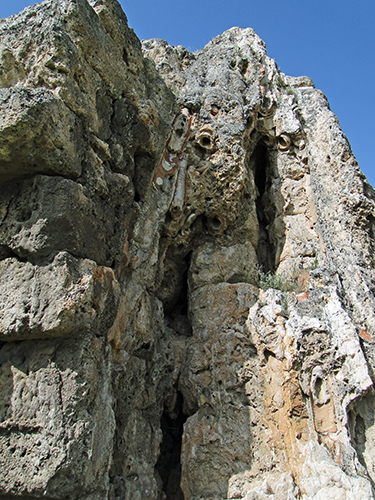
No comments